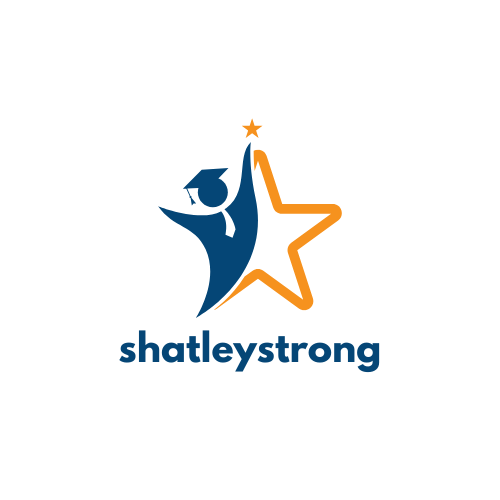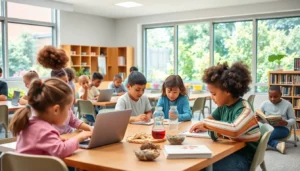Table of Contents
ToggleAlternative high school programs are like the secret menu at your favorite diner—often overlooked but packed with unique options that cater to diverse needs. While traditional education works for many, it’s not a one-size-fits-all solution. Some students thrive in environments that break the mold, embracing flexibility and creativity.
Imagine a place where learning isn’t confined to four walls, and students can explore their passions while earning a diploma. Alternative programs offer just that, providing tailored approaches that can reignite a love for education. Whether it’s through hands-on projects, online courses, or community involvement, these programs empower students to take charge of their learning journey. So, if conventional high school feels more like a square peg in a round hole, it might be time to explore the exciting world of alternative options.
Overview of Alternative High School Programs
Alternative high school programs cater to students who don’t flourish in conventional educational environments. These programs often emphasize personalized learning, allowing students to tailor their education according to their interests and strengths. Flexibility defines many alternative programs, with options such as online courses, internships, and project-based learning.
Students benefit from smaller class sizes, an aspect that fosters meaningful connections with educators. They receive support that addresses individual needs, making education more accessible for diverse learners. Community involvement often plays a crucial role, with students participating in local projects that enhance real-world skills.
Diverse curriculum options enhance education beyond standard academic subjects. Arts, trades, and technology courses often complement core subjects, opening pathways to various career opportunities. Mentorship programs provide guidance, ensuring students have access to resources that promote personal and educational growth.
Statistical data indicates that alternative high school students exhibit higher graduation rates compared to their peers in traditional settings. A focus on emotional and social development aids in cultivating resilience, preparing students for life beyond high school. Many graduates report feeling more engaged and equipped for both further education and careers.
Overall, alternative high school programs stand out as viable options for students seeking a more suitable learning experience, leading to empowered and motivated individuals ready to tackle future challenges.
Types of Alternative High School Programs

Various alternative high school programs cater to diverse student needs, promoting flexible and personalized learning. Each type offers unique advantages that can enhance educational experiences.
Charter Schools
Charter schools operate with greater autonomy than traditional public schools. These programs often emphasize specialized curricula, such as arts or sciences. Students attend charter schools by choice, with admissions typically based on a lottery system. Flexibility allows for innovative teaching methods that may not occur in standard settings. Many charter schools also focus on smaller class sizes, enabling closer relationships between students and educators. According to the National Center for Education Statistics, approximately 3 million students enrolled in charter schools across the United States in 2021, reflecting their growing popularity.
Magnet Schools
Magnet schools attract students from various districts, offering specialized education in fields like STEM, arts, or humanities. Students often apply to enroll in these schools through competitive admissions processes. By providing an appealing curriculum, magnet schools promote academic excellence and encourage diversity. Classes frequently include experiential learning opportunities, fostering practical skills in real-world contexts. Data shows that magnet schools, on average, yield higher test scores compared to nearby traditional schools, underscoring their effectiveness. In 2022, around 1.5 million students attended magnet schools nationwide.
Online Learning Platforms
Online learning platforms present flexible alternatives for high school students. With a range of digital resources, these programs cater to various learning styles and paces. Students can access a wide array of courses, from core subjects to elective options, all at their own convenience. Current statistics indicate that online education’s enrollment soared to over 3 million high school students in 2023, highlighting its significance in modern education. Interaction through discussion boards and virtual classrooms fosters collaboration and engagement among peers. These platforms create pathways for students to achieve their educational goals while balancing personal commitments.
Benefits of Alternative High School Programs
Alternative high school programs offer numerous advantages for students seeking different educational paths. These programs aim to enhance student engagement and success by cultivating personalized learning experiences.
Personalized Learning Approaches
Personalized learning approaches allow for tailored educational experiences. Students often explore curricula that resonate with their interests and strengths. Flexibility in teaching styles enables educators to meet diverse learning needs effectively. Individualized instruction fosters deeper understanding and retention of material. By focusing on what excites and motivates students, these programs support academic growth while cultivating critical thinking skills.
Flexibility and Adaptability
Flexibility and adaptability serve as essential cornerstones of alternative high school programs. Students enjoy the option to choose online courses, internships, or project-based learning opportunities. Maintaining a pace suited to their unique circumstances empowers learners to balance school with personal commitments. Smaller class sizes further enhance adaptability, providing more one-on-one support. Such environments enable students to thrive in ways traditional education may not accommodate.
Challenges Faced by Alternative High School Programs
Alternative high school programs encounter various challenges that can hinder their effectiveness.
Funding and Resources
Funding often presents a significant hurdle. Many alternative programs rely on state and local government resources, which can be inconsistent. Limited budgets restrict access to quality materials and essential staff. Consequently, reduced funding impacts the program’s ability to offer diverse curriculum options, such as arts and technology. Additionally, competition for resources among schools can leave alternative programs at a disadvantage despite high graduation rates among students.
Social Perceptions and Stigmas
Social perceptions pose another challenge for alternative high school programs. Many individuals associate these programs with failure or academic disadvantage. Stigmas can discourage potential students and their families from considering these options. As a result, misconceptions about the quality and effectiveness of alternative programs persist. Efforts to shift perspectives through community engagement and student success stories are essential. Positive narratives help counteract negative stereotypes and demonstrate the value of alternative education.
Alternative high school programs offer a refreshing approach to education that caters to diverse learners. By prioritizing personalized learning and flexibility, these programs empower students to take charge of their educational paths. The focus on hands-on experiences and community involvement not only enhances engagement but also equips students with valuable skills for the future.
While challenges such as funding and societal perceptions persist, the benefits of alternative high school programs are undeniable. They provide opportunities for growth and achievement that traditional settings may not offer. As awareness of these programs increases, more students can find the supportive and innovative environments they need to thrive. Embracing alternative education can lead to a brighter future for many young individuals.




